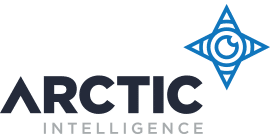Introduction
Human trafficking and money laundering are interconnected crimes that thrive on exploitation and the misuse of financial systems. Human trafficking generates billions of dollars in illicit profits annually, much of which is laundered to integrate the proceeds into the legitimate economy. Addressing this nexus is critical to dismantling trafficking networks and protecting vulnerable populations. This article explores the legislative initiatives aimed at breaking the cycle of human trafficking and money laundering (ML), the challenges in enforcement, and the steps needed to enhance the effectiveness of these laws.
The Connection Between Human Trafficking and Money Laundering
1. Profits from Exploitation
Human trafficking involves forced labour, sexual exploitation, and other forms of modern slavery. Traffickers generate substantial profits by exploiting victims, often transferring these illicit proceeds through financial systems to obscure their origins.
2. Laundering Methods
Traffickers use various methods to launder money, including:
- Cash-Based Transactions: Depositing or moving small amounts of cash to avoid detection.
- Shell Companies: Using anonymous entities to conceal ownership and transaction trails.
- Real Estate: Investing illicit funds in high-value properties.
- Cryptocurrencies: Leveraging digital currencies for anonymity and rapid cross-border transfers.
3. The Role of Financial Systems
Financial institutions are often unknowingly involved in processing transactions linked to trafficking, highlighting the importance of anti-money laundering (AML) frameworks to identify and disrupt such activities.
Legislative Frameworks Targeting ML Linked to Human Trafficking
1. Financial Action Task Force (FATF) Recommendations
The FATF provides global standards for combating ML and terrorism financing, emphasizing the importance of addressing predicate crimes like human trafficking. Relevant recommendations include:
- Recommendation 1: Applying a risk-based approach to assess and mitigate ML risks.
- Recommendation 29: Strengthening the role of Financial Intelligence Units (FIUs) in detecting and reporting suspicious activities.
- Recommendation 30: Enhancing law enforcement’s capacity to investigate and prosecute ML related to human trafficking.
2. United Nations Protocol to Prevent, Suppress and Punish Trafficking in Persons
Also known as the Palermo Protocol, this international treaty:
- Encourages member states to criminalize human trafficking and associated ML activities.
- Promotes international cooperation in identifying and prosecuting traffickers.
- Calls for measures to protect victims and ensure their access to justice.
3. United States Legislation
The U.S. has implemented robust laws targeting ML linked to human trafficking, including:
- Trafficking Victims Protection Act (TVPA): Criminalizes trafficking and provides protections for victims.
- Bank Secrecy Act (BSA): Requires financial institutions to report suspicious activities related to trafficking.
- Combating Human Trafficking in Commercial Vehicles Act: Enhances law enforcement training to detect trafficking networks.
4. European Union Directives
The EU has developed comprehensive AML/CTF frameworks to combat trafficking:
- Directive 2011/36/EU: Establishes minimum standards for combating human trafficking.
- AMLD5 and AMLD6: Strengthen requirements for identifying and reporting ML linked to trafficking activities, including enhanced transparency for beneficial ownership.
5. National and Regional Initiatives
Many countries have adopted tailored legislation to combat trafficking and related ML, often in collaboration with regional bodies such as the African Union and ASEAN.
Challenges in Combating ML Linked to Human Trafficking
1. Complexity of Financial Networks
Human trafficking networks operate across borders, leveraging complex financial systems to obscure the origins and destinations of illicit funds. Identifying these networks requires international cooperation and advanced analytical tools.
2. Weak Implementation of Laws
While many countries have enacted robust AML laws, enforcement often lags due to:
- Limited resources and training for law enforcement and financial institutions.
- Corruption and lack of political will in certain jurisdictions.
- Inconsistent application of international standards.
3. Victim-Centric Challenges
Focusing on financial flows can sometimes divert attention from victim protection. Effective frameworks must balance law enforcement priorities with victim support.
4. Technological Barriers
The increasing use of cryptocurrencies and digital financial platforms complicates efforts to trace and disrupt illicit funds. Regulatory frameworks often struggle to keep pace with technological advancements.
Best Practices for Legislative and Enforcement Strategies
1. Enhance Financial Transparency
- Mandate the disclosure of beneficial ownership for corporate entities and trusts.
- Strengthen regulations for virtual asset service providers (VASPs) to prevent misuse of cryptocurrencies.
2. Strengthen Public-Private Partnerships
- Encourage collaboration between financial institutions, law enforcement, and non-governmental organizations (NGOs).
- Develop information-sharing mechanisms to identify and report suspicious activities more effectively.
3. Invest in Technology
- Leverage artificial intelligence (AI) and machine learning to detect patterns indicative of trafficking-related ML.
- Use blockchain analytics to trace cryptocurrency transactions linked to trafficking networks.
4. Provide Training and Resources
- Train law enforcement, prosecutors, and financial institutions to identify trafficking indicators in financial transactions.
- Allocate resources to FIUs for advanced data analysis and investigations.
5. Promote Victim-Centered Approaches
- Ensure that AML efforts complement measures to protect and rehabilitate trafficking victims.
- Develop legal frameworks that prioritize restitution and compensation for victims.
Case Studies: Successes and Lessons Learned
1. Operation STOP
A multi-jurisdictional operation led by Europol identified and disrupted a trafficking network laundering money through real estate investments. Collaboration between FIUs and private sector entities was key to its success.
2. U.S. Financial Crimes Enforcement Network (FinCEN)
FinCEN’s advisories on human trafficking have guided financial institutions in identifying red flags, such as unusual transactions linked to hotels or transportation services, which are common in trafficking operations.
3. ASEAN Regional Initiatives
The Association of Southeast Asian Nations (ASEAN) has implemented regional frameworks to combat trafficking and related ML, emphasizing cross-border cooperation and capacity building.
Conclusion
Human trafficking and money laundering are deeply intertwined crimes that exploit legal and financial systems to perpetuate exploitation. Legislative initiatives targeting ML linked to trafficking must evolve to address the complexities of modern financial networks. By enhancing transparency, fostering international cooperation, leveraging technology, and prioritizing victim-centered approaches, governments and stakeholders can break the cycle of trafficking and its financial underpinnings. Sustained commitment and innovative strategies will be essential to eradicating these crimes and ensuring justice for victims.



